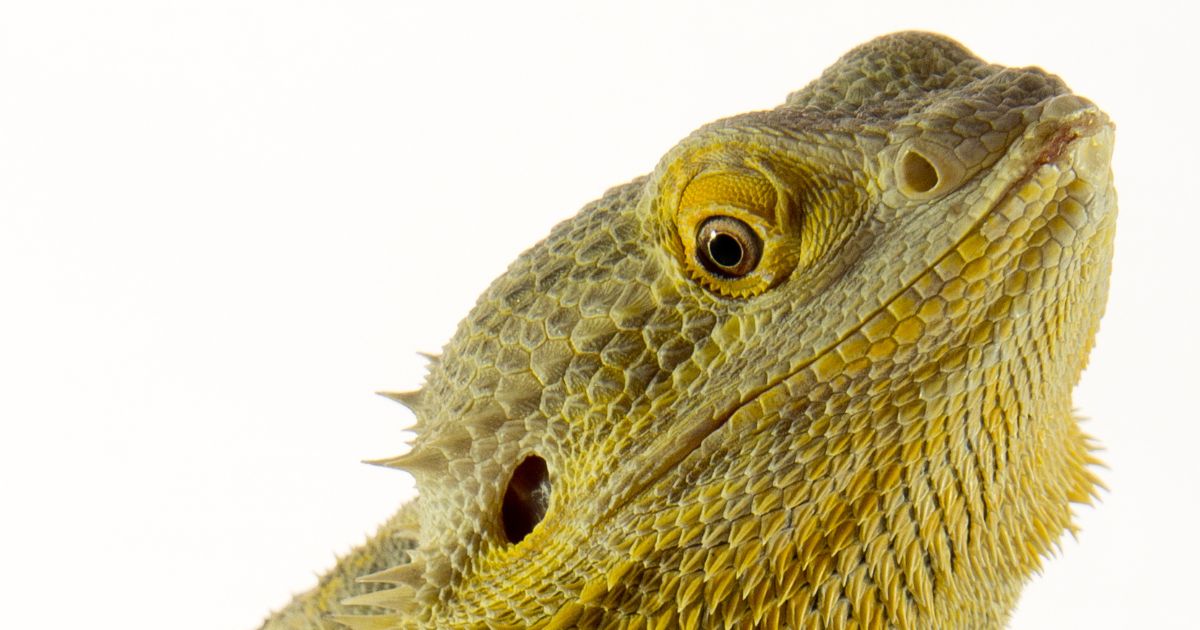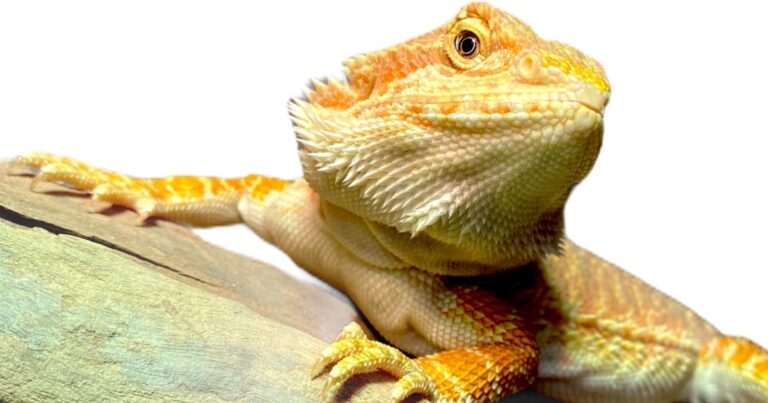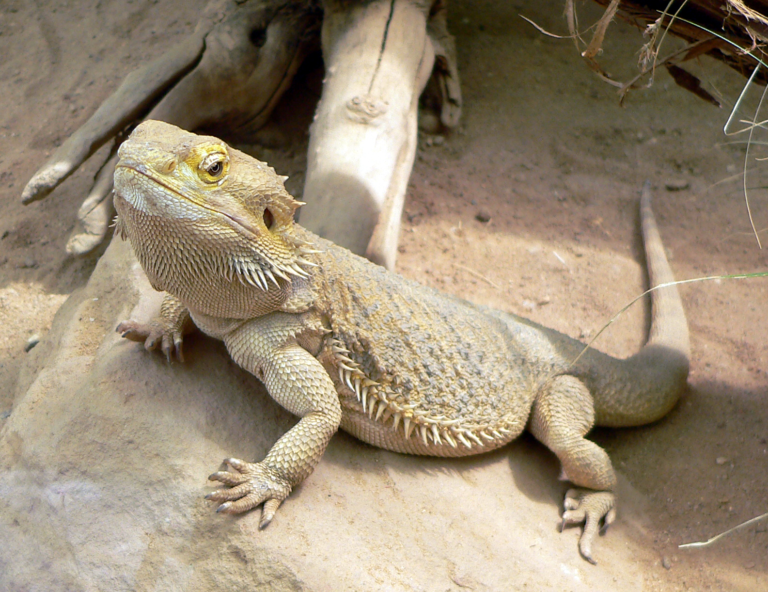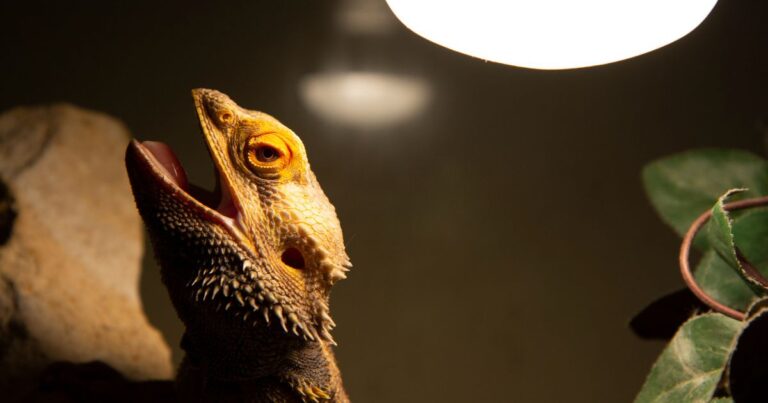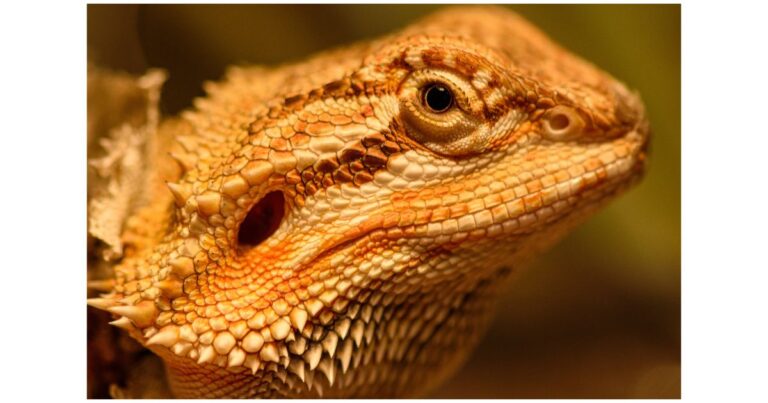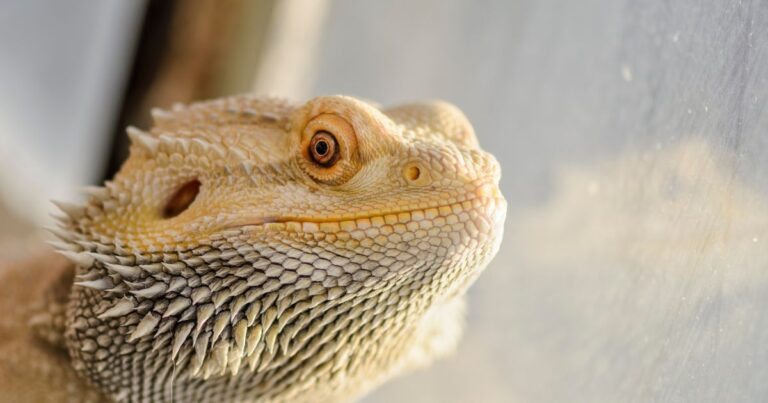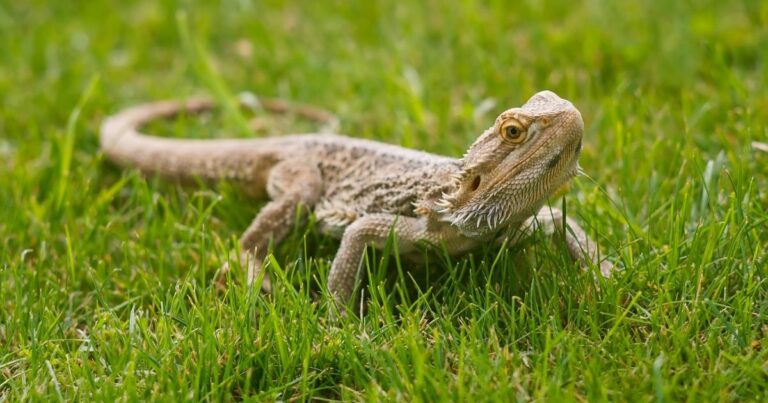Top 10 Facts You Need to Know About Bearded Dragons
Table of Contents
Bearded Dragons, those spiky yet adorable reptiles, are full of surprises! In this playful journey, we’ll uncover the top 10 facts about these fascinating creatures. So, buckle up and prepare to be amazed by the world of Bearded Dragons!
Introduction
Bearded dragons, with their unique appearance and friendly nature, have become one of the most popular reptile pets around the world. Known scientifically as Pogona vitticeps, these bearded lizards are admired for their distinctive looks and intriguing behaviors. So, what makes them so special? Let’s embark on a journey to uncover the top 10 facts about bearded dragons that every enthusiast should know.
The more I learn about bearded dragons, the more I am amazed by these creatures. Their unique behaviors, their adaptability, their interaction with humans – all of these aspects make them a fascinating subject of study and an even more fascinating pet.
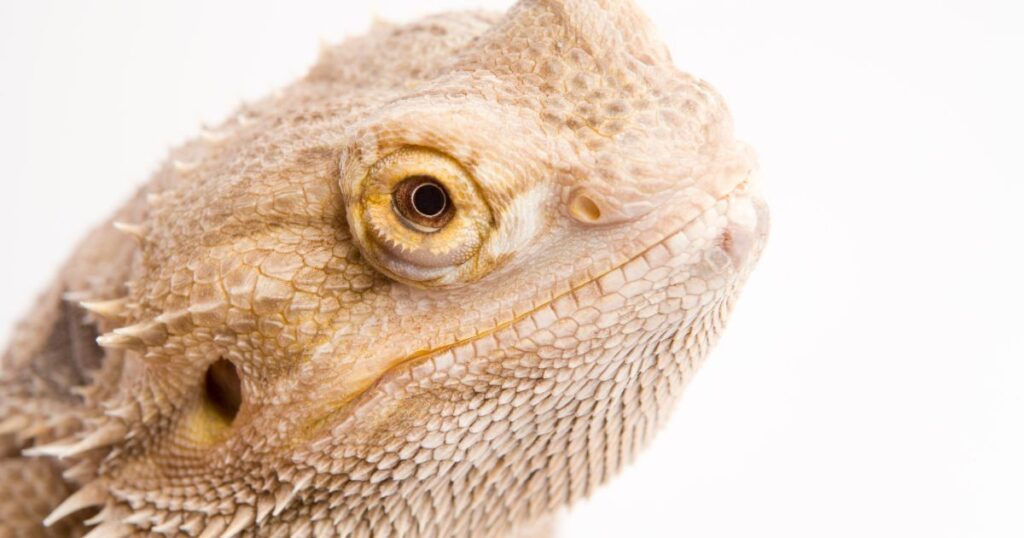
1. More Than Just a Pretty Face: The Distinctive Look of Bearded Dragons
One of the first things you’ll notice about a bearded dragon is its distinctive, spiky ‘beard’. This beard, which is actually a set of specialized scales around their neck, can be puffed up when the dragon feels threatened or during courtship rituals. I remember the first time I held a bearded dragon. Its spiky, beard-like scales were surprisingly soft, and its eyes, a captivating blend of intelligence and curiosity, seemed to observe me as much as I was observing it. This encounter was a vivid reminder of the unique physical characteristics that make bearded dragons such fascinating creatures to study and care for.
Bearded dragons are not just about their ‘beards’. Their unique physical attributes extend beyond that. For instance, their eyes are a marvel in themselves. They have a 360-degree arc of vision and can even see ultraviolet light! This extraordinary vision helps them spot predators, prey, and mates in their native Australian habitats. Their eyes are also a window into their health and mood. Bright, alert eyes are a sign of a healthy and happy dragon. So, the next time you look into the eyes of a bearded dragon, remember, there’s a lot more going on than meets the eye!
Common Bearded Dragon Behaviors
- Arm Waving: A submissive behavior, often seen in younger dragons.
- Head Bobbing: A sign of dominance, often seen in males.
- Beard Puffing: A defense mechanism when they feel threatened.
- Glass Surfing: A sign of stress or boredom, indicating they want to get out of their enclosure.
- Brumation: A form of hibernation during colder months.
2. Masters of Disguise: The Color-Changing Wonders of Bearded Dragons
Did you know that bearded dragons can change the color of their skin? Yes, they can! Bearded dragons are known for their ability to change their body color in response to their environment or emotional state. This color-changing ability helps them regulate their body temperature and communicate with other dragons. For instance, a bearded dragon may darken its skin to absorb more heat, or a male might display brighter colors during courtship.
Bearded dragons are like the chameleons of the desert. They can change their color to blend into their environment, communicate, or regulate their body temperature. But did you know that their color-changing abilities also reflect their mood? Yes, a bearded dragon can go from a light, happy color to a dark, stressed color in a matter of minutes. It’s like they’re wearing their hearts on their scales! So, the next time you see a bearded dragon change color, remember, it’s not just a cool trick, it’s a form of dragon communication!
3. Home Sweet Home: The Australian Origins of Bearded Dragons
Bearded dragons hail from the arid, rocky regions and dry open woodlands of central Australia. They are well-adapted to this harsh environment, and their behaviors and physical characteristics reflect their desert origins. In the wild, bearded dragons are often found basking on rocks, in bushes, or on fence posts in the early morning and late afternoon. They are excellent climbers and will often seek out elevated spots for basking. This behavior is crucial for thermoregulation and digestion, a fact that I was reminded of during one of my most memorable experiences observing a bearded dragon’s basking behavior. See also my post: Journey Down Under: The Australian Roots of Bearded Dragons
Australia is more than just the home of bearded dragons; it’s the canvas that has shaped their behaviors and physical characteristics. The harsh desert environment has made them resilient and adaptable. They’ve learned to bask in the sun to regulate their body temperature and to burrow in the sand to escape predators and the intense midday heat. These behaviors are not just instinctual; they’re a testament to the bearded dragon’s survival skills. So, when you create a habitat for a bearded dragon, remember, you’re not just building a home, you’re recreating a piece of Australia!
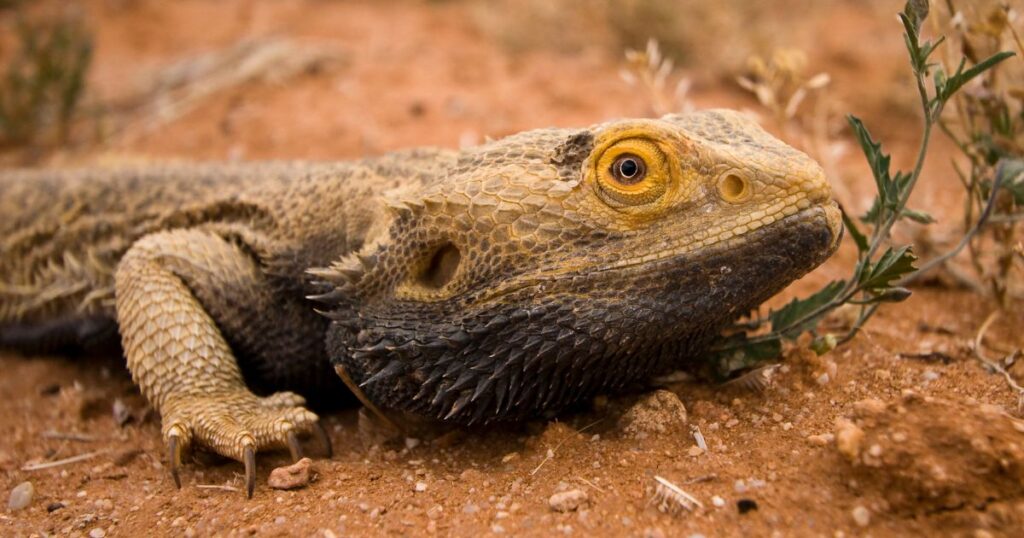
4. Feast Fit for a Dragon: The Omnivorous Diet of Bearded Dragons
Unlike many reptiles, bearded dragons are omnivores, enjoying a varied diet of both insects and plants. They eat a variety of foods including crickets, mealworms, and other insects, as well as fruits, vegetables, and even flowers. When I first started learning about bearded dragons, I was surprised to discover that they are omnivores. I had assumed, like many people, that reptiles were primarily carnivorous. This revelation about their diet opened my eyes to the complexity of their nutritional needs and made me realize the importance of providing a balanced diet for a pet dragon. See also my post: Should Bearded Dragons Eat Mealworms?
The diet of bearded dragons is a smorgasbord of insects, fruits, and vegetables. But it’s not just about what they eat, it’s about how they eat. Bearded dragons are opportunistic feeders. In the wild, they eat whatever they can find, whenever they can find it. This adaptability is a key to their survival in the harsh Australian deserts. In captivity, this means they can enjoy a varied diet, but it also means they can overeat if given the chance. So, when feeding a bearded dragon, remember, variety is the spice of life, but moderation is the key to health!
| Food Type | Examples |
|---|---|
| Insects | Crickets, mealworms, waxworms |
| Vegetables | Collard greens, bell peppers, carrots |
| Fruits | Apples, peaches, bananas |
5. Size Matters: The Impressive Length of Bearded Dragons
Fully grown bearded dragons can reach impressive lengths, with half of that being their tail. On average, they grow to about 16 to 24 inches from head to tail. The males are usually larger than the females and have a broader head. Despite their size, bearded dragons are known for their gentle and docile nature, making them a favorite among reptile enthusiasts.
Bearded dragons are not the largest lizards out there, but they are certainly not the smallest either. Their size is part of their charm. When fully grown, they can reach lengths of up to 24 inches, half of which is their tail. This makes them a substantial presence in your home or classroom, but not so large as to be unmanageable. Despite their size, they are gentle creatures, known for their calm demeanor. So, while they might look a bit intimidating at first glance, they are actually quite the opposite!
Bearded Dragon Size Comparison
| Age (Months) | Average Length (Inches) |
|---|---|
| 1-3 | 3-11 |
| 4-6 | 9-16 |
| 7-9 | 13-20 |
| 10-12 | 16-22 |
| Adult | 18-24 |
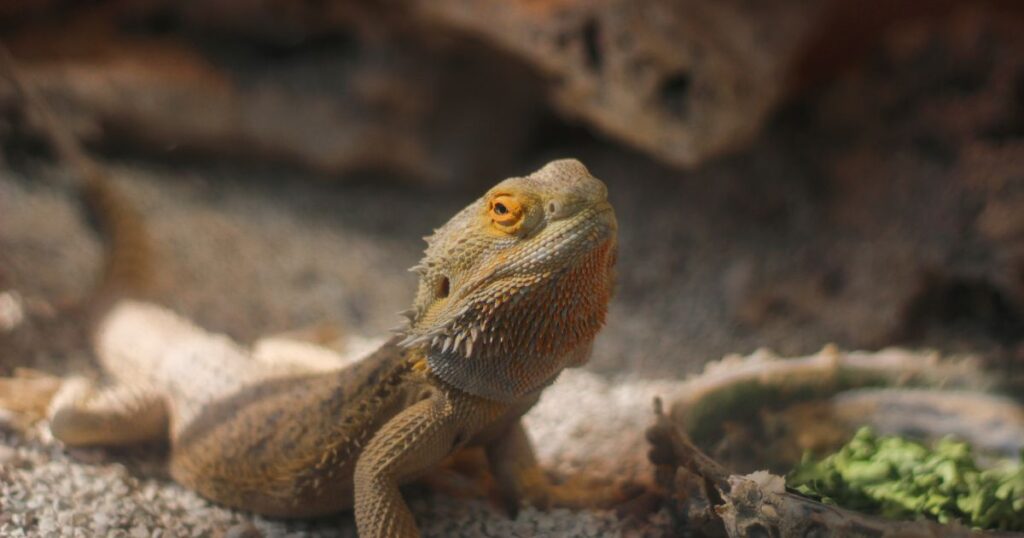
6. Long Live the Dragon: The Remarkable Lifespan of Bearded Dragons
With proper care, your bearded dragon companion can share many years with you. On average, bearded dragons live for about 10 to 15 years in captivity, although some have been known to live up to 20 years. Their lifespan is influenced by various factors, including diet, habitat, and overall health. Regular vet check-ups and a balanced diet can help ensure your bearded dragon lives a long, healthy life.
Bearded dragons are not just a short-term commitment; they can be your companion for many years. With proper care, a bearded dragon can live up to 10 to 15 years in captivity, and some have even been known to reach the ripe old age of 20! This longevity means that you’ll have plenty of time to bond with your bearded dragon and learn all about their unique behaviors and quirks. So, when you bring a bearded dragon into your home, you’re not just getting a pet, you’re gaining a long-term friend!
Bearded Dragon Lifespan
| In Captivity | In the Wild |
|---|---|
| 8-12 years | 5-8 years |
7. Love in the Time of Dragons: The Unique Reproduction of Bearded Dragons
Bearded dragons have a unique reproductive process, with females capable of laying multiple clutches of eggs per mating. During the breeding season, the female can lay anywhere from 15 to 30 eggs per clutch, which she buries in the sand. One of the most interesting things I’ve learned in my journey of understanding bearded dragons is their unique mating system known as polygyny, where one male mates with multiple females. This was a surprising discovery, as it challenged the common assumption that reptiles are solitary creatures. This was a surprising discovery for me, as it challenged the common assumption that reptiles are solitary creatures. Understanding this aspect of their behavior has been a fascinating journey, and it’s just another reason why bearded dragons are such incredible creatures! This knowledge has been invaluable in understanding their social dynamics and has guided me in providing the right environment for them. See also my post: Are Bearded Dragons Solitary?
The reproduction of bearded dragons:
| Aspect | Details |
|---|---|
| Mating Season | Bearded dragons typically breed in the spring. |
| Courtship | Male bearded dragons perform a series of head bobs and arm waves to attract a female. |
| Gestation Period | After mating, the female bearded dragon can lay her eggs in about 4-6 weeks. |
| Number of Eggs | A female bearded dragon can lay between 15 and 30 eggs per clutch. |
| Incubation Period | The eggs need to be incubated for around 55-75 days before they hatch. |
| Sex Determination | The sex of the hatchlings is determined by the temperature at which the eggs were incubated. Higher temperatures tend to produce more females, while lower temperatures produce more males. |
| Maturation | Bearded dragons reach sexual maturity at around 8-12 months of age. |
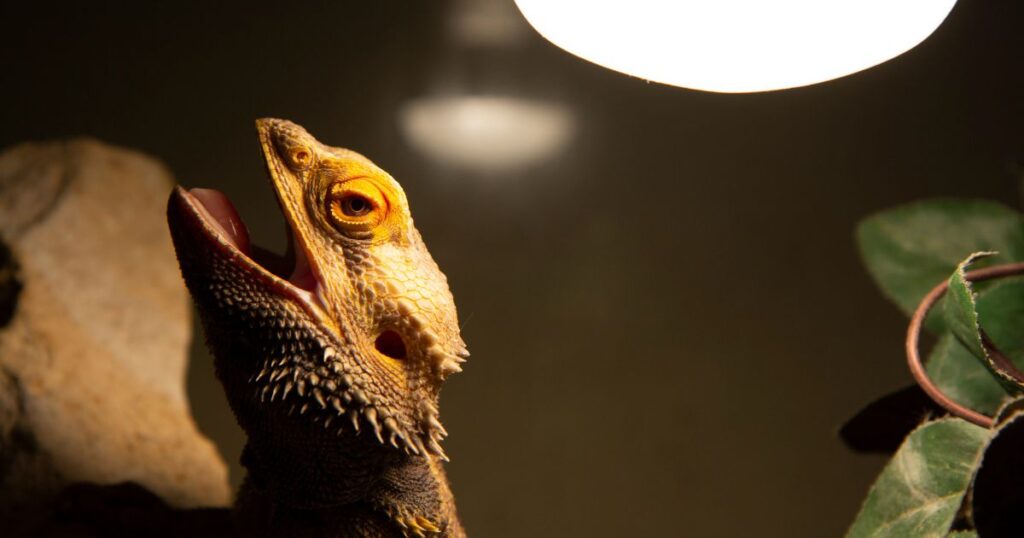
8. Sunbathing and Chill: The Laid-back Lifestyle of Bearded Dragons
Known for their docile nature, bearded dragons are often seen basking during the day. They are diurnal, meaning they are active during the day and sleep at night. Bearded dragons have a range of behaviors that they use to communicate, including arm waving, head bobbing, and beard puffing. These behaviors can indicate anything from submission to aggression, depending on the context. Check out my post Bearded Dragons Thermoregulation: How They Stay Cool
Bearded dragons are the epitome of laid-back. They love to bask in the sun during the day, soaking up the warmth and UV rays. But don’t let their relaxed demeanor fool you. They are also quite communicative, using a range of behaviors like arm waving, head bobbing, and beard puffing to express themselves. These behaviors can mean different things in different contexts, from submission to aggression. So, when you see a bearded dragon basking in the sun, remember, they’re not just chilling out, they’re also communicating in their own unique way!
9. Basking in the Sun: The Thermoregulation Tactics of Bearded Dragons
As cold-blooded creatures, bearded dragons rely on their environment to regulate their body temperature. They bask in the sun to warm up and seek shade to cool down. In captivity, it’s important to provide a temperature gradient in their enclosure, with a basking spot at one end and a cooler area at the other. This allows the bearded dragon to move around and regulate its body temperature as needed.
Bearded dragons are experts at controlling their body temperature. As cold-blooded creatures, they rely on their environment to do this. They love to bask in the sun, soaking up the warmth to get their bodies up to the right temperature. But they’re also smart about it. If they get too hot, they’ll seek out a shady spot to cool down. In captivity, it’s crucial to mimic this natural temperature gradient in their enclosure. This allows them to move around and find the perfect spot to either warm up or cool down, just like they would in the wild.
10. Everyone’s Favorite Reptile: The Rising Popularity of Bearded Dragons as Pets
Their easy care and calm demeanor have made bearded dragons one of the most popular reptile pets. Their unique behaviors and interactive nature make them fascinating to watch and interact with. They are generally tolerant of handling, which is a plus for families with children. However, like any pet, they require a commitment to their care and well-being. This includes providing a suitable habitat, a balanced diet, and regular health check-ups.
Top 5 Reasons Bearded Dragons Make Great Pets
- They have a calm and friendly nature.
- They are relatively easy to care for.
- They have a long lifespan, especially in captivity.
- They are known for their unique behaviors and appearance.
- They can form a strong bond with their owners.
Bearded dragons are quickly becoming a favorite among pet owners, and it’s not hard to see why. They’re relatively easy to care for, they have a calm demeanor, and they’re just plain cool to look at! But what really sets them apart is their interactive nature. They’re not just a pet to look at; they’re a pet to engage with. They enjoy being handled and will often respond to their owners, making them a fun and interactive pet. But remember, like any pet, they require a commitment to their care. This includes providing the right habitat, a balanced diet, and regular health check-ups.
In my journey, I’ve seen the joy and fulfillment that comes from caring for a bearded dragon. From setting up their habitat to watching them thrive, it’s a rewarding experience that continually fuels my passion for these amazing creatures. But remember, owning a bearded dragon is a long-term commitment, so it’s important to do your research and ensure you’re ready for the responsibility.
Bearded dragons might seem like a fierce choice for a pet, but these reptiles are incredibly friendly and make perfect pets for first-time owners.
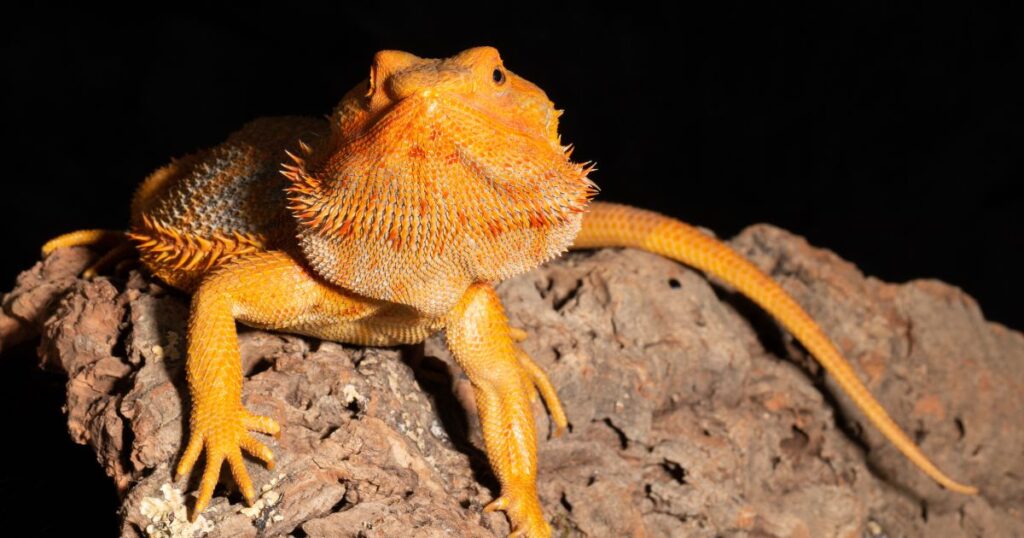
Conclusion
These ten facts only scratch the surface of what makes bearded dragons such fascinating creatures. There’s so much more to these fascinating creatures, from their unique behaviors to their adaptability. Whether you’re a seasoned reptile enthusiast or just starting your journey into the world of bearded dragons, there’s always something new to learn. So, keep exploring, keep learning, and most importantly, keep appreciating these incredible creatures. They truly are a marvel of nature. From their unique appearance and behaviors to their adaptability and popularity as pets, there’s so much to learn and appreciate about these amazing reptiles. Whether you’re a seasoned reptile enthusiast or new to the world of bearded dragons, I hope this article has provided you with valuable insights and deepened your understanding of these incredible creatures.
Frequently Asked Questions
How do bearded dragons stay cool?
Bearded dragons are like little sunbathers, basking in the sun to warm up. But when they need to cool down, they’re smart about it and seek out shady spots. In captivity, it’s important to provide a gradient of temperature in their enclosure, so they can find their perfect chill-out spot!
Can bearded dragons really change color?
Absolutely! Bearded dragons are the chameleons of the desert. They can change their color to blend into their environment, communicate, or regulate their body temperature. It’s like they’re wearing their hearts on their scales!
What do bearded dragons eat?
Bearded dragons are not picky eaters. They’re omnivores, which means they enjoy a smorgasbord of insects, fruits, and vegetables. But remember, moderation is key to a healthy dragon diet!
How long do bearded dragons live?
With proper care, a bearded dragon can live up to 10 to 15 years in captivity. Some have even been known to reach the ripe old age of 20! So, when you bring a bearded dragon into your home, you’re gaining a long-term friend.
Are bearded dragons good pets?
Bearded dragons are quickly becoming a favorite among pet owners. They’re relatively easy to care for, have a calm demeanor, and they’re just plain cool to look at! Plus, they enjoy being handled and can form a strong bond with their owners.
How big do bearded dragons get?
Bearded dragons can reach lengths of up to 24 inches when fully grown, half of which is their tail. Despite their size, they’re known for their calm demeanor. So, while they might look a bit intimidating at first glance, they’re actually quite the opposite!
Where are bearded dragons from?
Bearded dragons hail from the arid, rocky regions and dry open woodlands of central Australia. They’ve adapted to this harsh environment, learning to bask in the sun to regulate their body temperature and to burrow in the sand to escape predators and the intense midday heat.
Can bearded dragons swim?
While they’re not exactly Michael Phelps, bearded dragons can swim! However, they’re more adapted to life in arid environments, so any swimming should be supervised and in shallow water. Always make sure your dragon can touch the bottom with its feet.
Call to Action
Now that you’re equipped with these essential bearded dragon facts, are you ready to embark on the rewarding journey of bearded dragon ownership? If you’re interested in learning more about bearded dragons or other reptiles, be sure to check out my other articles in the Bearded Dragon Facts category. For a deeper dive into the nocturnal habits of bearded dragons, don’t miss my previous post, Central Bearded Dragon: A Fascinating Journey into Their World. And for a comprehensive overview of bearded dragon facts, my cornerstone page on Bearded Dragon Facts is a must-read.
Disclaimer: This article is intended for informational purposes only. It’s not a substitute for professional veterinary advice, diagnosis, or treatment. Always seek the advice of your veterinarian or other qualified health provider with any questions you may have regarding a pet’s medical condition. Never disregard professional advice or delay in seeking it because of something you have read in this article.
